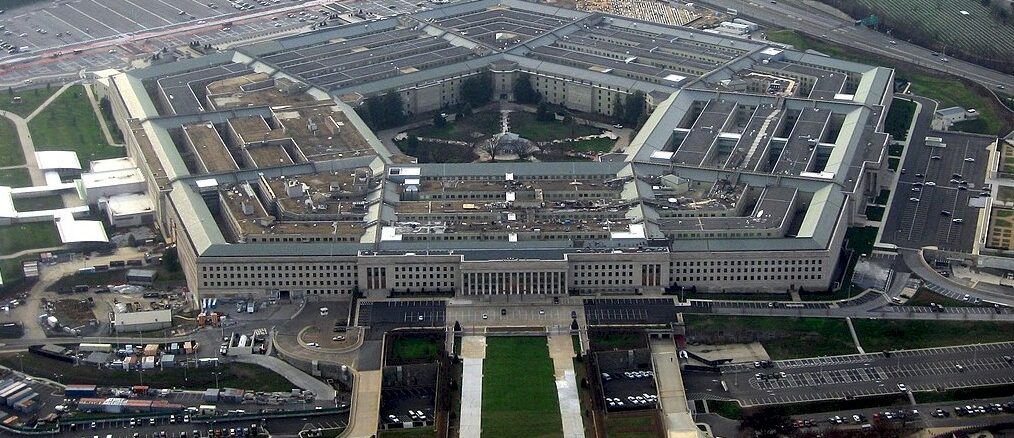
The Department of Defense in the United States has established a generative AI task force to help oversee the process of adopting AI tools across the department while avoiding some of the pitfalls of such deoployments.
Known as Task Force Lima, the new body has been formed under the direction of Kathleen Hicks, Deputy Secretary of Defense, and is expected to play a vital role in analyzing and integrating generative AI tools such as large language models (LLMs) in the Defense Department.
The future of defense is not just about adopting the latest technologies, but needs to be carried out with responsibility and developing a deep understanding of the broader implications, Hicks said in a statement.
“As we navigate the transformative power of generative AI, our focus remains steadfast on ensuring national security, minimizing risks, and responsibly integrating these technologies.”
The role of Task Force Lima will be to assess generative AI capabilities and help to implement them across the DoD, with the objective of ensuring that the Department remains at the forefront of advanced technology at the same time as safeguarding national security.
LLMs have been in the news ever since OpenAI released ChatGPT onto an unsuspecting world late last year, and since then there has been an ongoing frenzy of attention around the technology and other examples of generative AI applications that are able to able to produce text, video, images, and other content in response to a request.
Microsoft notably infused ChatGPT into its Bing search engine earlier this year, punting the technology as being capable of answering complex questions and getting better answers for users.
The DoD said that it hoped that using such generative AI models, which use huge datasets to train algorithms capable of producing an outcome efficiently, would allow it to enhance its operations in areas such as warfighting, business affairs, health, readiness, and policy.
Task Force Lima will be led by the Chief Digital and Artificial Intelligence Office (CDAO), which became operational in June 2022 and which is responsible for driving the DoD’s adoption of data, analytics, and AI.
“The adoption of artificial intelligence in defense is not solely about innovative technology but also about enhancing national security,” said US Navy Captain Manuel Xavier Lugo, Task Force Lima mission commander and member of the CDAO’s Algorithmic Warfare Directorate. Lugo is heading a team comprised of Principal Staff Assistants from the Office of the Secretary of Defense (OSD), the Joint Staff, the Services, other DoD agencies, and the Intelligence Community. Experts from Industry and academia will also participate, the DoD said.
“The Services and Combatant Commands are actively seeking to leverage the benefits and manage the risks of generative AI capabilities and LLMs across multiple mission areas, including intelligence, operational planning, programmatic and business processes,” Lugo said.
The DoD is wise to be cautious of the risks of LLMs and generative AI. Last week, a study produced by Purdue University found that ChatGPT produced incorrect answers 52 percent of the time in response to programming questions, but that users were often lulled into accepting the incorrect answer because of the Chabot’s “authoritative style.”
In addition, as researchers at Stanford University pointed out earlier this year while experimenting with Meta’s Platform’s LLaMA model, “instruction-following models still have many deficiencies: they can generate false information, propagate social stereotypes, and produce toxic language.”
Then again, so can people.





In my opinion, the best AI app for DoD purposes, would be one that simulates enemy behavior through agent-based modeling of multiple generative AIs with contrasting personality traits (including neurotics, as in the recent Mars outpost study from El Reg.). Such simulations should make it posible to develop and evaluate riposte strategies that are highly effective against rather realistic synthetic antagonists (more realsitic than previously). Wargaming could involve several teams of humans and AIs battling it out virtually to chisel-out those winning strategies that succeed with minimal drawbacks (if any), in support of decision-making needs (the same as DoD does today, but with bigger computers, and even scarier AI!).
LLMs are the Frank’s RedHot of computing — can’t fault folks for putting that s*** on everything (ahem-ahem)! q^8
Considering all of the evidence that has resulted in where all of the support of all past DoD decision-making needs has landed them, q^8 ….. in unwinnable and deadly war zones rather than peaceful prosperous societies …… and which sadly and madly appears to be their preferred and prized knuckle-headed default wallow …… it is both my opinion, and wiser than it may sound advice, that the DoD DO NOT HEED any instructions/suggestions from an AI[real or otherwise] or anybody/anything else, that pits it against itself with ill intent with any form of malicious and malignant attack.
The consequences of such are suitably horrendously dire and result every time without fail, and without the need of favours and outside additional help, in adversarial forces and sources being expunged and permanently removed, …. as in comprehensively and unceremoniously annihilated, from every Greater IntelAIgent Game Field of Advanced IntelAIgent Future Play
Hot sauce, son. Nothing else in the world smells like that. I love the smell of Frank’s RedHot in the morning. You know, one time we had steak and eggs doused in it, for 12 hours. When it was all over, I ate it up. We didn’t find one of ’em, not one bit of steak or egg remaining in our plates. The smell, you know that vinegar and cayenne smell? The whole bowels. Smelled like … victory. Someday this breakfast’s AI hot sauce’s gonna end. 8^q
With TNP stars aligned on an SC workcation, in the Chalerstonian Savannah, where virtual giraffes and suchlikes provide endless entertainment, I found myself in need to satiate cognitively with dietary alternatives and head-on faced a potential flurry of propositions addressing the “memory wall”, or thereabouts — particularily, recent reports on BlueShift Memory (but also dataflow archs, AVX10 K-masks (eg. KXNORD), FabreX — as recently featured; etc…). Are we truly any nearer to cracking this memory-access Kung-Fu gordian nut bottleneck of HPC and AI (or is this all just talk)? A TNP deep-dive on this challenging and evolving topic would be most welcome in my mind (if the state-of-the-current-art warrants)!
Hmmm … Tesla’s Dojo computational space-heater (15KW), with its list parsing and gather engines, might too qualify … (TNP of 08/22).